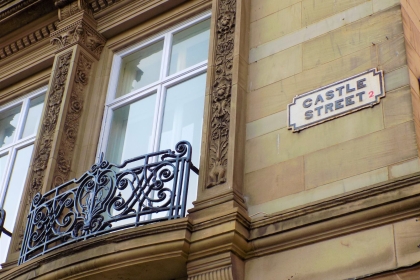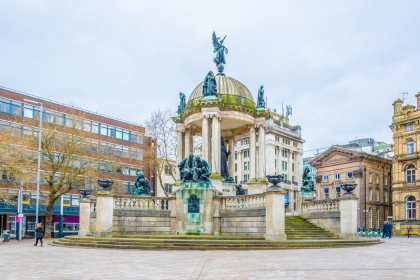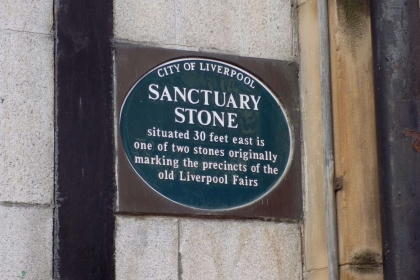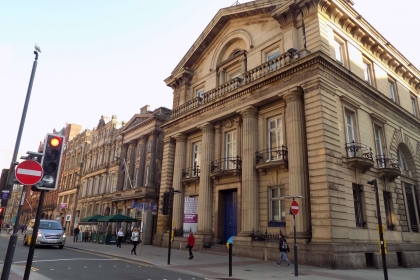Welcome to Castle Street, One of Liverpool's Original Streets That Has Stood the Test of Time. From Historic Roots Has Grown the City's Plushest Place to Socialise.
As one of the oldest streets in the city, Castle Street has been a core part of Liverpool’s growth and success throughout the years. The beautiful buildings that line the wide street still adorn the names of banks and professional services that once called the place home, boastful of Liverpool’s success and stance during its prosperous years in the maritime and industrial trade.
At the end of Castle Street is Liverpool Town Hall, that stands proudly with a majestic statue of Greek Goddess Minerva on its dome, as if casting a protective eye over the people and businesses of Castle Street. The street itself is booming with business, with bars and restaurants regularly popping up along the street, taking advantage of the beautiful interior that past residents have gifted, making it a real mixture between the past and the present.
It is the unique melange of its historic roots and cosmopolitan branches that has created this wonderful vibe which effortlessly combines business with pleasure.
At the end of Castle Street is Liverpool Town Hall, that stands proudly with a majestic statue of Greek Goddess Minerva on its dome, as if casting a protective eye over the people and businesses of Castle Street. The street itself is booming with business, with bars and restaurants regularly popping up along the street, taking advantage of the beautiful interior that past residents have gifted, making it a real mixture between the past and the present.
It is the unique melange of its historic roots and cosmopolitan branches that has created this wonderful vibe which effortlessly combines business with pleasure.
Five Facts About Castle Street
 1
Castle Street is one of Liverpool’s original seven streets and dates back to the 13th century, way before Liverpool became a city.
1
Castle Street is one of Liverpool’s original seven streets and dates back to the 13th century, way before Liverpool became a city.
 2
At the end of Castle Street, near the Crown Courts, stood The Castle of Liverpool, built between 1232 and 1237. A plaque to commemorate the castle sits on the Queen Victoria monument.
2
At the end of Castle Street, near the Crown Courts, stood The Castle of Liverpool, built between 1232 and 1237. A plaque to commemorate the castle sits on the Queen Victoria monument.
 3
When Liverpool was a medieval town, markets used to take place on Castle Street and evidence of this is still visible today. The Sanctuary Stone, on the floor just outside Pinch and within the loading area, marks the spot where the markets used to stop.
3
When Liverpool was a medieval town, markets used to take place on Castle Street and evidence of this is still visible today. The Sanctuary Stone, on the floor just outside Pinch and within the loading area, marks the spot where the markets used to stop.
 4
The Bank of England built one of its branches on Castle Street during the 19th century and it still remains at number 31 Castle Street.
4
The Bank of England built one of its branches on Castle Street during the 19th century and it still remains at number 31 Castle Street.

